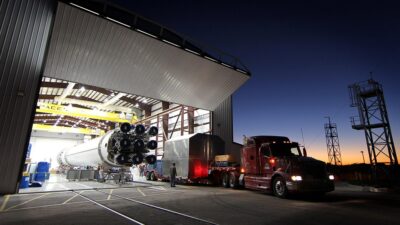In today’s fast-paced, technologically driven world, consumer expectations are at an all-time high. This is especially true in the automotive industry, where innovation, performance, and user experience are key determinants of success. Tesla, the trailblazing electric vehicle (EV) manufacturer, has stood out in the crowd not just for its cutting-edge technology but also for its exceptional ability to gather and utilize user feedback to enhance its vehicle performance and overall customer satisfaction.
The Importance of User Feedback
User feedback is a treasure trove of insights that can catalyze innovation and refinement. In Tesla’s case, this feedback comes from various channels, including surveys, social media, forums, and direct communication through the vehicles themselves. With a user base that’s not only passionate but also actively engaged, Tesla has developed a significant advantage in understanding the needs and preferences of its customers.
Data Collection Mechanisms
Tesla vehicles are fitted with an elaborate network of sensors that collect real-time data about numerous facets of vehicle performance, including battery efficiency, autopilot usage, and driver behavior. Beyond these technical metrics, the company encourages owners to share feedback through its mobile app and proprietary software interfaces. This open line of communication means that Tesla can rapidly identify areas for improvement or new features that customers want.
Optimizing Autopilot and Full Self-Driving Features
One of the most notable examples of Tesla implementing user feedback is in its Autopilot and Full Self-Driving (FSD) features. The software relies heavily on data from Tesla’s fleet, which continues to grow daily. Each time a driver uses these features, valuable insights are gathered about real-world driving conditions, edge cases, and user interactions.
By analyzing this data, Tesla’s engineering team can enhance algorithm performance and improve user experience. Updates are frequently rolled out over the air, allowing all Tesla owners to benefit from the latest improvements without needing to visit a service center. This agile approach not only enhances vehicle safety and performance but also reinforces customer loyalty through continuous upgrades.
Enhancing Battery Technology and Efficiency
Tesla also utilizes user feedback to improve its battery technology. Owners often report on battery performance, charge times, and energy consumption in various driving conditions. This data informs Tesla’s engineers, enabling them to make iterative enhancements that maximize efficiency and range.
For example, Tesla’s use of sophisticated data modeling allows it to adjust battery management systems remotely, addressing individual vehicle performance issues based on real-time reports. This responsive strategy has contributed to the company’s reputation for producing vehicles with some of the longest ranges available in the EV market.
Adapting to User Preferences
Beyond technical performance, Tesla is keenly aware of user preferences regarding aesthetics and comfort. Through direct interaction and feedback gathered via online platforms, the company has made adjustments in design options, interior customizable features, and more. This constant evolution in response to user requests cultivates a sense of ownership and brand loyalty among Tesla customers.
Challenges and Ethical Considerations
While the utilization of user feedback is a powerful tool for improvement, it does come with challenges. Data privacy is an ongoing concern, especially when it comes to collecting sensitive information from users. Tesla must navigate these waters carefully, ensuring that feedback is gathered ethically and transparently.
Moreover, the reliance on data can occasionally lead to challenges with vehicle personalization. Not all feedback is created equal, and user preferences can vary widely; Tesla must strike a balance between the majority’s desires and minority preferences.
Conclusion
The power of data in Tesla’s operations cannot be overstated. By actively engaging with user feedback and leveraging a wealth of data gathered from its fleet, Tesla continuously enhances its vehicles’ performance and user experience. This approach not only helps the company stay ahead of competitors but also fosters a loyal customer base that feels heard and valued.
In an age where data is king, Tesla exemplifies how to transform user insight into actionable improvements, ensuring that both the cars and the customer experience are always evolving for the better. As they continue to innovate in electric vehicle technology, one can expect that Tesla will keep utilizing the transformative power of data to shape the future of automotive excellence.



